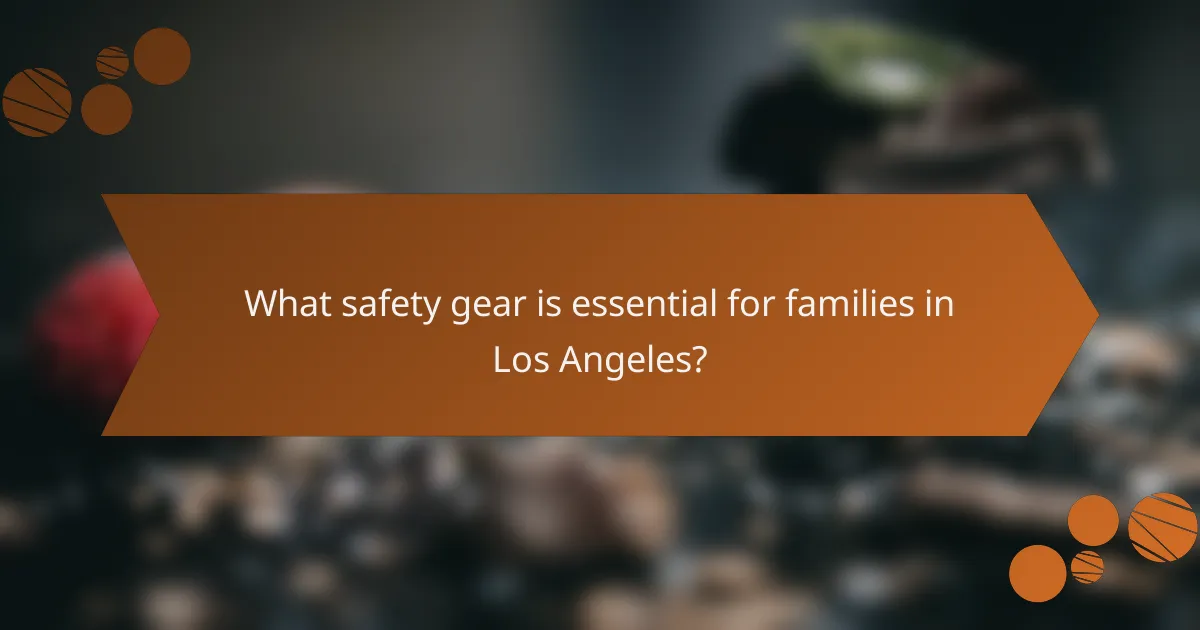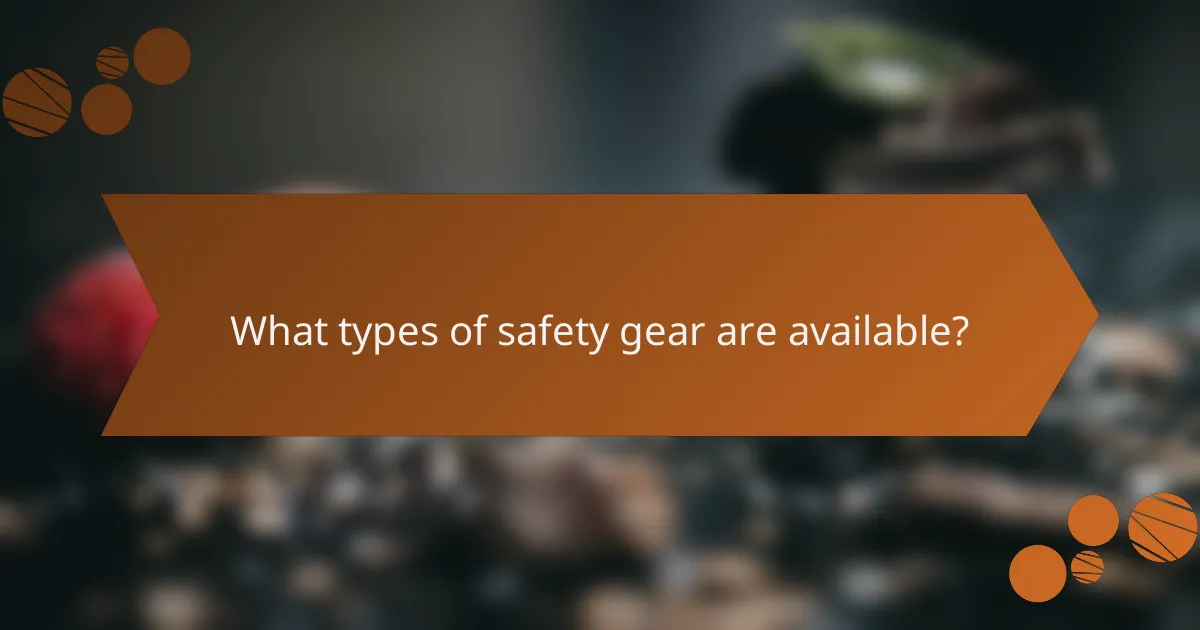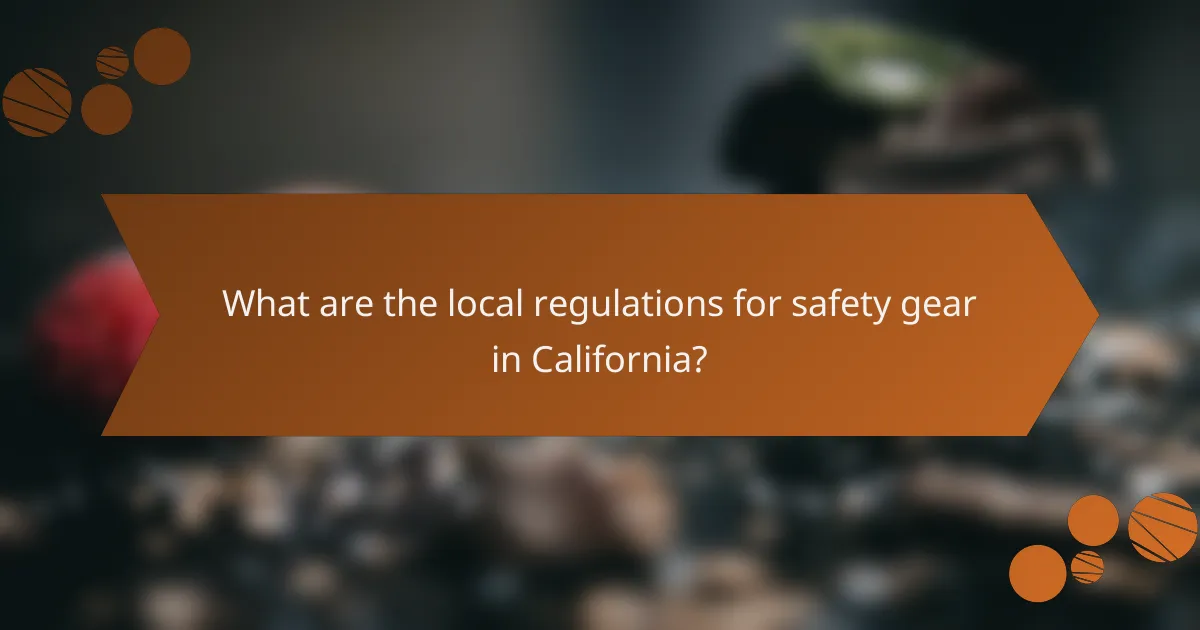Ensuring the safety of your family during various activities is crucial, especially in a bustling environment like Los Angeles. From cycling and sports to water activities and home projects, selecting the right safety gear—such as helmets, life jackets, and protective pads—can significantly reduce the risk of injury. It’s essential to consider the specific needs of each family member, including their age and the activities they participate in, to choose equipment that meets safety standards and fits comfortably.

What safety gear is essential for families in Los Angeles?
Families in Los Angeles should prioritize safety gear that protects against common activities like cycling, sports, water activities, and home projects. Essential items include helmets, protective pads, life jackets, and safety goggles to ensure safety during recreational and daily activities.
Helmets for cycling and skateboarding
Helmets are crucial for protecting the head during cycling and skateboarding, especially in a bustling city like Los Angeles. Look for helmets that meet safety standards such as CPSC or ASTM, which ensure they can withstand impacts.
When choosing a helmet, ensure it fits snugly without being too tight. A good rule of thumb is to measure the head circumference and select a size that corresponds to the manufacturer’s sizing chart. Regularly check for wear and tear, replacing helmets after any significant impact.
Protective pads for sports
Protective pads, including knee and elbow pads, are essential for children participating in sports like skateboarding, rollerblading, or biking. These pads help absorb shocks and prevent injuries during falls.
When selecting pads, opt for those with adjustable straps for a secure fit. Look for options that provide adequate coverage while allowing for mobility. Encourage children to wear these pads consistently to build a habit of safety.
Life jackets for water activities
Life jackets are vital for families engaging in water activities such as boating or swimming in open waters. In California, it’s required by law for children under 13 to wear a life jacket while on a moving vessel.
Choose life jackets that are U.S. Coast Guard-approved and suitable for the child’s weight and size. Ensure the jacket fits snugly and allows for free movement, and always supervise children closely when they are in or near water.
Safety goggles for DIY projects
Safety goggles are essential for protecting eyes during DIY projects, especially when using tools or working with hazardous materials. In Los Angeles, where home improvement projects are common, having a reliable pair of goggles can prevent serious injuries.
Look for goggles that provide a comfortable fit and are rated for impact resistance. Ensure they seal well around the eyes to prevent dust and debris from entering. Always wear goggles when performing tasks that could result in flying particles or splashes.

How to choose the right safety gear?
Choosing the right safety gear involves assessing the specific needs of your family members based on their age, size, and the activities they will engage in. Prioritize equipment that meets safety standards and fits properly to ensure maximum protection and comfort.
Consider age and size of the family members
When selecting safety gear, consider the age and size of each family member. For children, ensure that helmets, pads, and other protective gear are designed specifically for their age group and weight range. Adult gear will not fit properly and may not provide adequate protection for younger users.
Look for adjustable options that can grow with your child or gear that is available in various sizes. This ensures a snug fit, which is crucial for effectiveness during activities like cycling or skateboarding.
Evaluate activity-specific requirements
Different activities require different types of safety gear. For instance, biking necessitates a helmet, knee pads, and elbow pads, while skateboarding may also require wrist guards. Assess the specific risks associated with each activity to determine what gear is essential.
Consider the environment as well; for example, if your family enjoys water sports, life jackets that meet local safety regulations are a must. Always match the gear to the activity to ensure optimal safety.
Check for safety certifications
Safety gear should meet established safety standards to ensure it provides adequate protection. Look for certifications from recognized organizations, such as the Consumer Product Safety Commission (CPSC) for helmets or the American Society for Testing and Materials (ASTM) for various protective equipment.
Before purchasing, verify that the gear displays these certifications, as this indicates it has undergone rigorous testing. Avoid gear without proper certifications, as it may not provide the protection needed in case of an accident.

What types of safety gear are available?
Safety gear encompasses a variety of equipment designed to protect individuals from injuries or hazards in different environments. The main categories include personal protective equipment (PPE), outdoor sports gear, and home improvement safety gear, each tailored to specific activities and risks.
Personal protective equipment (PPE)
Personal protective equipment (PPE) is essential for safeguarding individuals in workplaces or environments where hazards are present. Common types of PPE include helmets, gloves, goggles, and ear protection, each designed to mitigate specific risks such as falling objects, chemical exposure, or loud noises.
When selecting PPE, consider factors like the nature of the task, the level of risk involved, and compliance with safety regulations. For example, construction workers typically require hard hats and steel-toed boots, while laboratory personnel may need gloves and safety goggles.
Outdoor sports gear
Outdoor sports gear is designed to enhance safety during recreational activities such as cycling, skiing, or hiking. Essential items include helmets, knee and elbow pads, and reflective clothing, which help prevent injuries and improve visibility in low-light conditions.
When participating in outdoor sports, always choose gear that fits well and meets safety standards relevant to the activity. For instance, a properly fitted bicycle helmet can significantly reduce the risk of head injuries during accidents.
Home improvement safety gear
Home improvement safety gear protects individuals during DIY projects or renovations. Key items include safety goggles, dust masks, and work gloves, which help prevent injuries from tools, chemicals, and debris.
Before starting any home improvement task, ensure you have the appropriate safety gear. For example, using a dust mask while sanding can prevent inhalation of harmful particles, while gloves protect your hands from cuts and abrasions.

What are the local regulations for safety gear in California?
California has specific regulations regarding safety gear, particularly for minors and water activities. These laws aim to enhance safety and reduce the risk of injuries during recreational activities.
Mandatory helmet laws for minors
In California, all minors under the age of 18 are required to wear helmets while riding bicycles, skateboards, and scooters. This law is designed to protect young riders from head injuries, which can be severe.
Parents and guardians should ensure that helmets meet the safety standards set by the Consumer Product Safety Commission (CPSC). It is advisable to choose helmets that fit properly and are comfortable to encourage consistent use.
Guidelines for life jacket usage
California law mandates that children under 13 years old must wear a life jacket while on a moving vessel. This regulation is crucial for preventing drowning incidents in the state’s lakes, rivers, and coastal waters.
When selecting a life jacket, ensure it is U.S. Coast Guard-approved and fits snugly without being too tight. Regularly check for wear and tear, and replace any damaged jackets to maintain safety standards.

How can families ensure proper usage of safety gear?
Families can ensure proper usage of safety gear by conducting regular inspections and providing training on how to use the equipment correctly. This proactive approach helps maintain the gear’s effectiveness and ensures everyone understands its importance.
Conduct regular gear inspections
Regular inspections of safety gear are essential to identify wear and tear that could compromise safety. Families should check equipment like helmets, pads, and harnesses for cracks, frayed straps, or other damage at least once a month or before each use.
Establish a checklist for inspections that includes checking for proper fit, functionality, and cleanliness. For example, ensure that helmets are snug and free of dents, while pads should be intact without any holes. Keeping a log of inspections can help track the condition of the gear over time.
Provide training on proper use
Training on the proper use of safety gear is crucial for maximizing its effectiveness. Families should hold regular sessions to teach all members how to wear and adjust their gear correctly, emphasizing the importance of using it consistently during activities.
Consider practical demonstrations for activities like cycling or skateboarding, where wearing a helmet and pads is vital. Encourage family members to practice putting on and taking off the gear, and discuss scenarios where safety gear is necessary to reinforce its importance.
